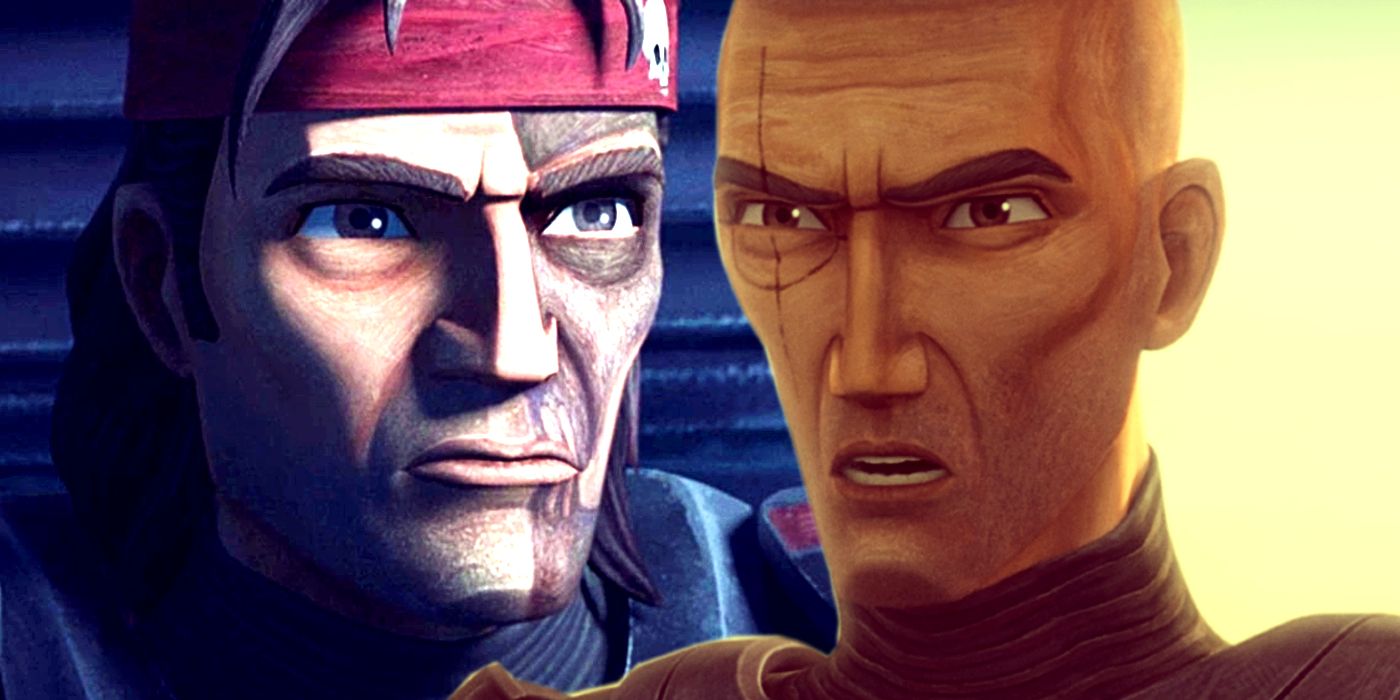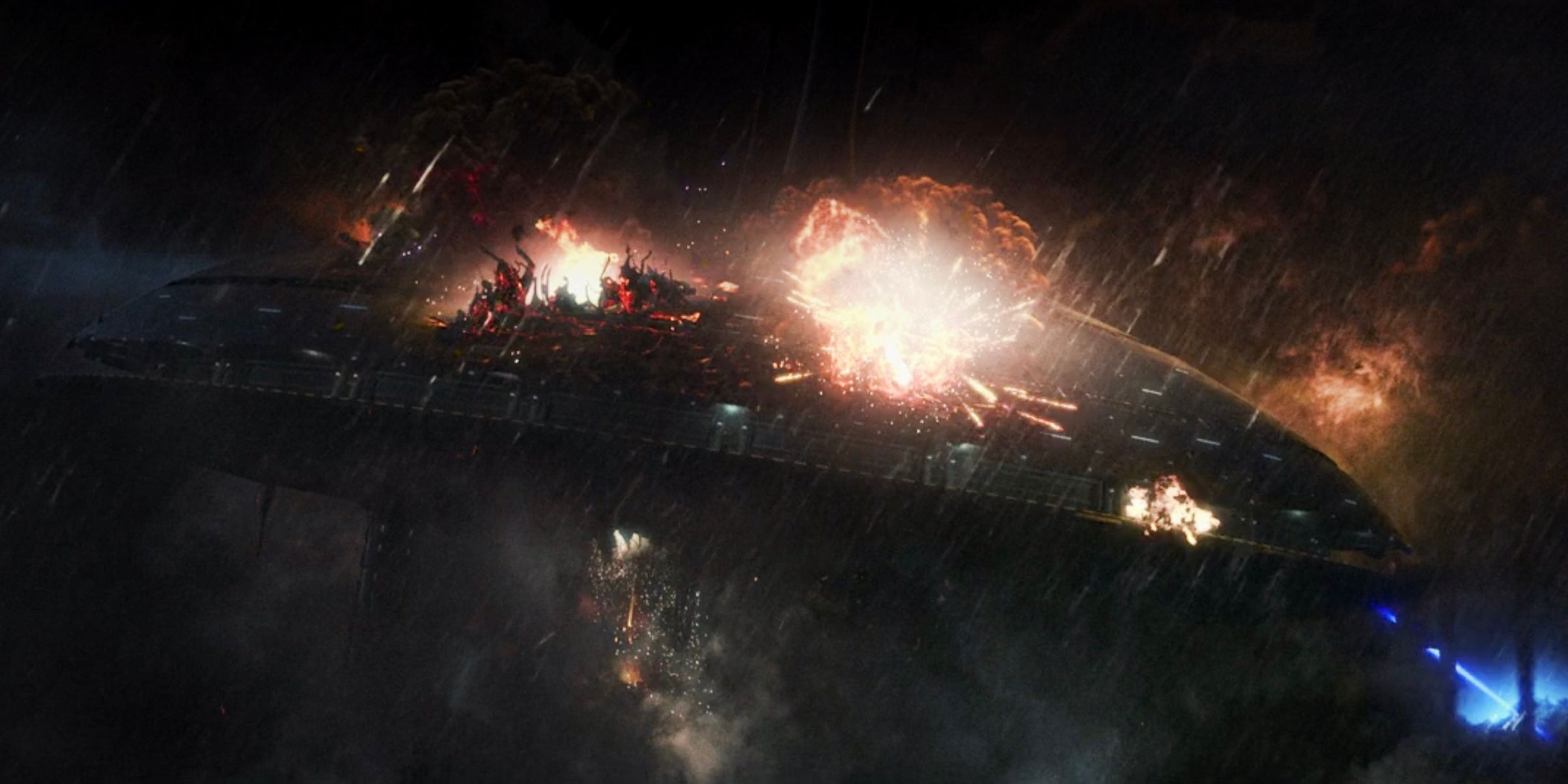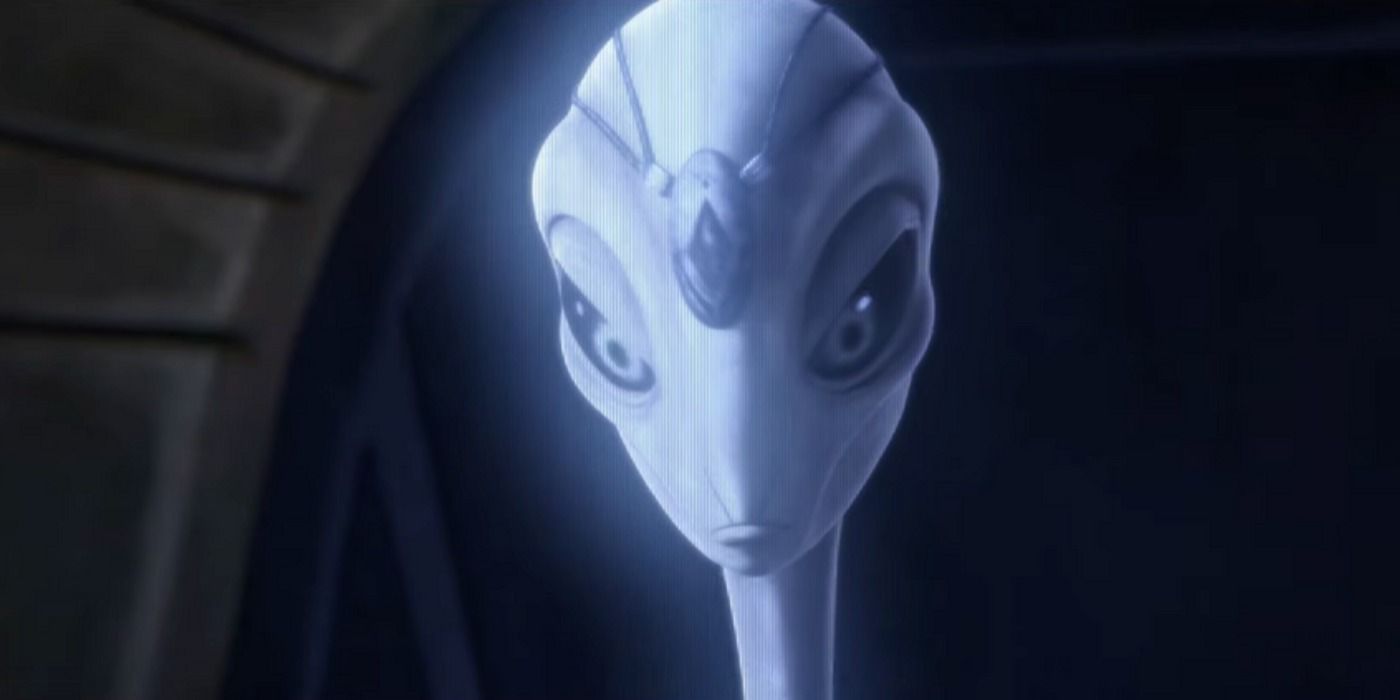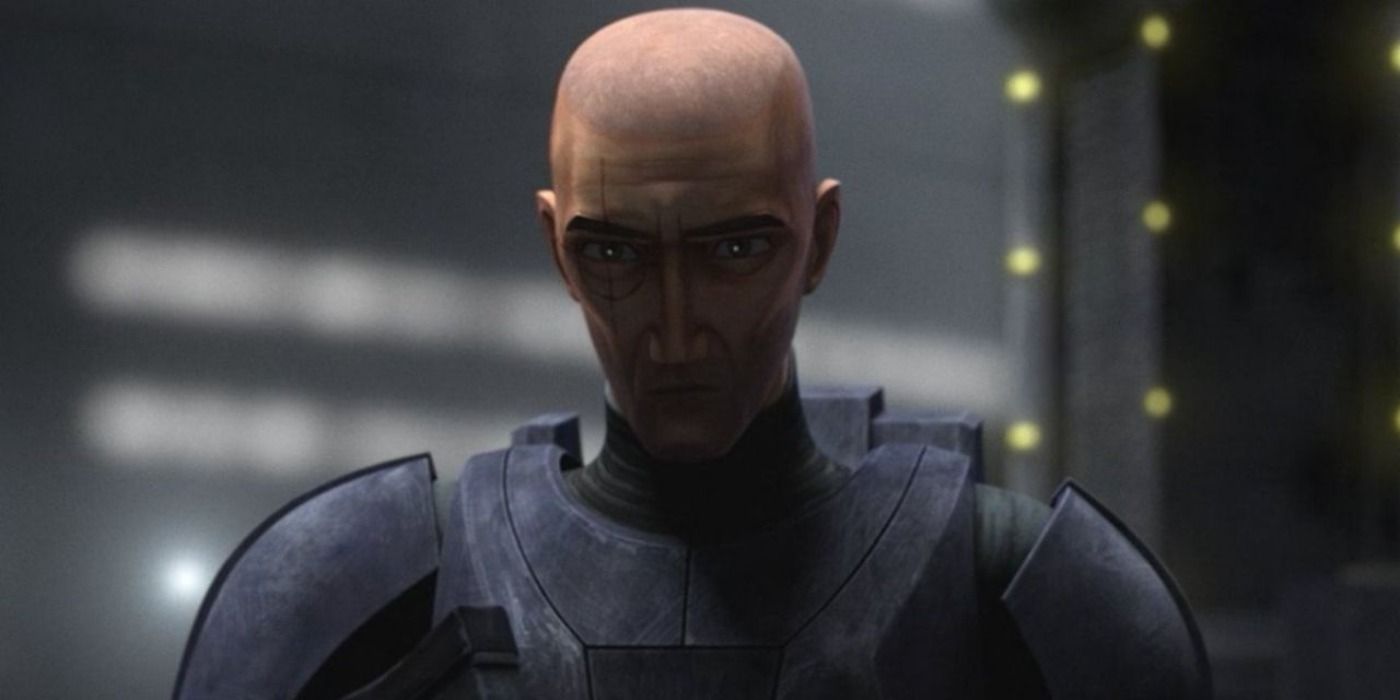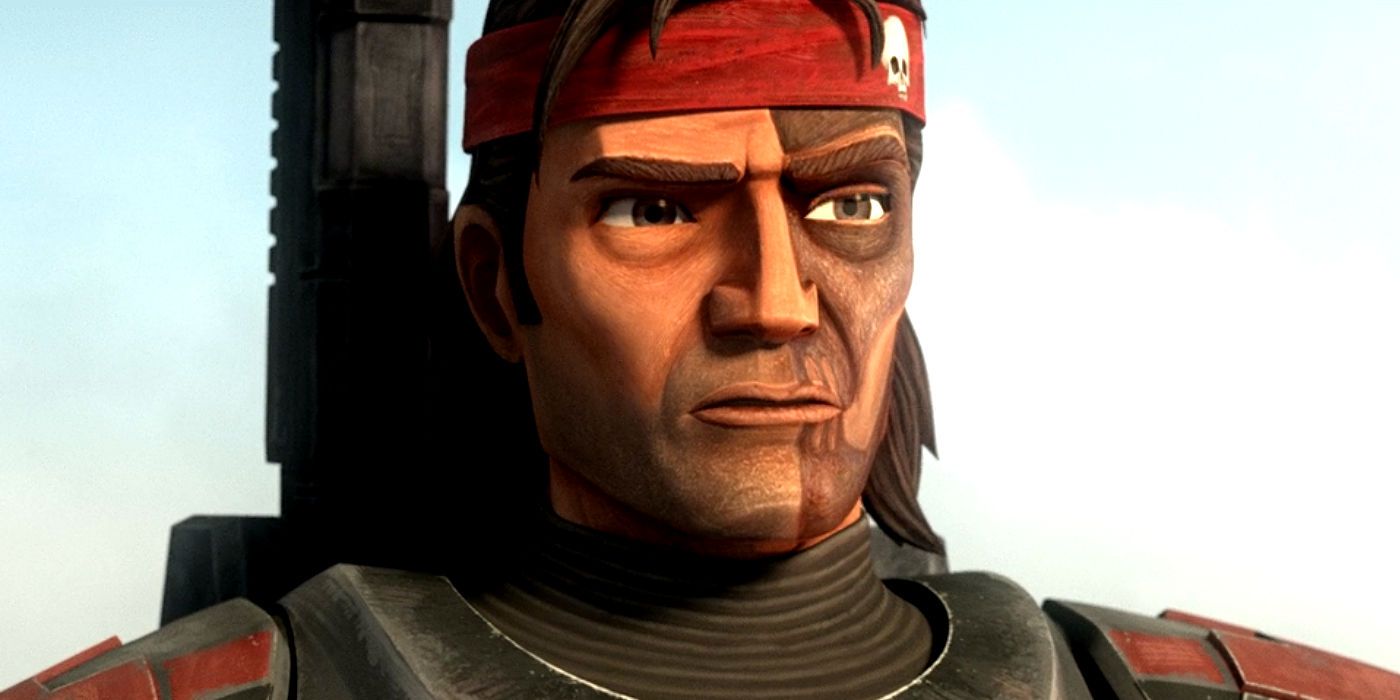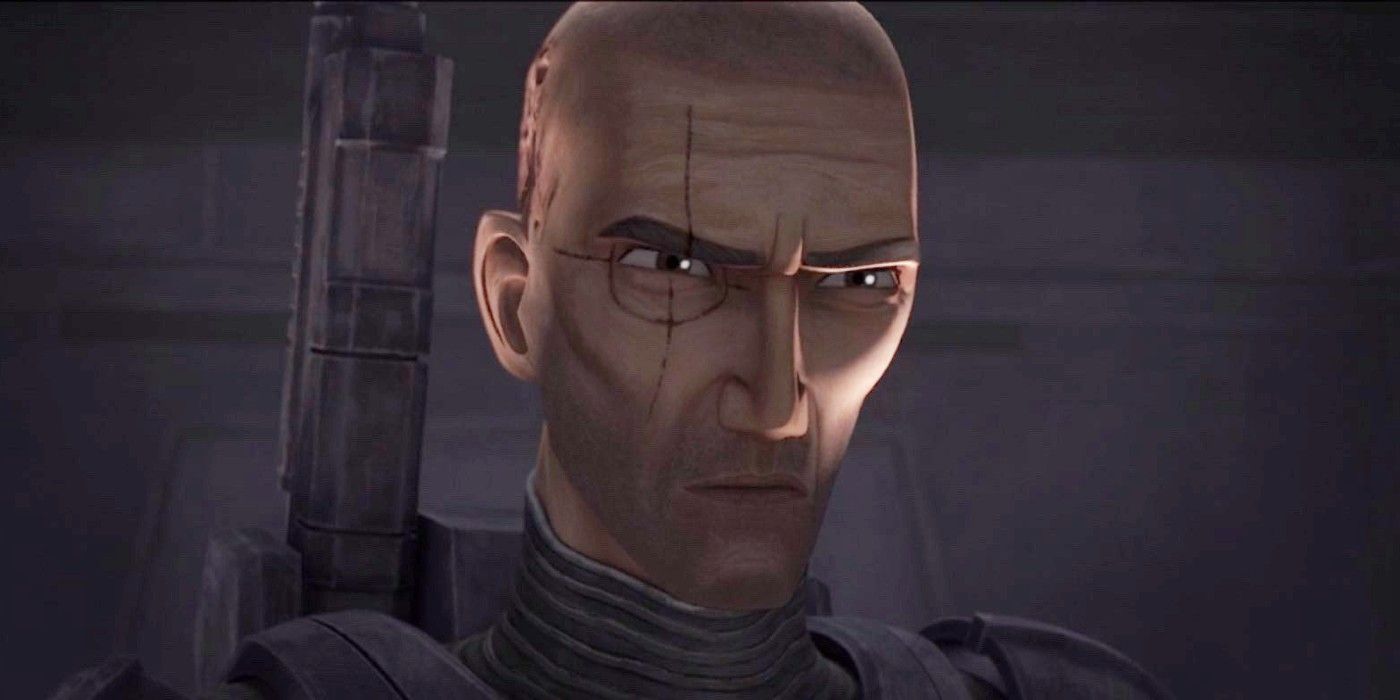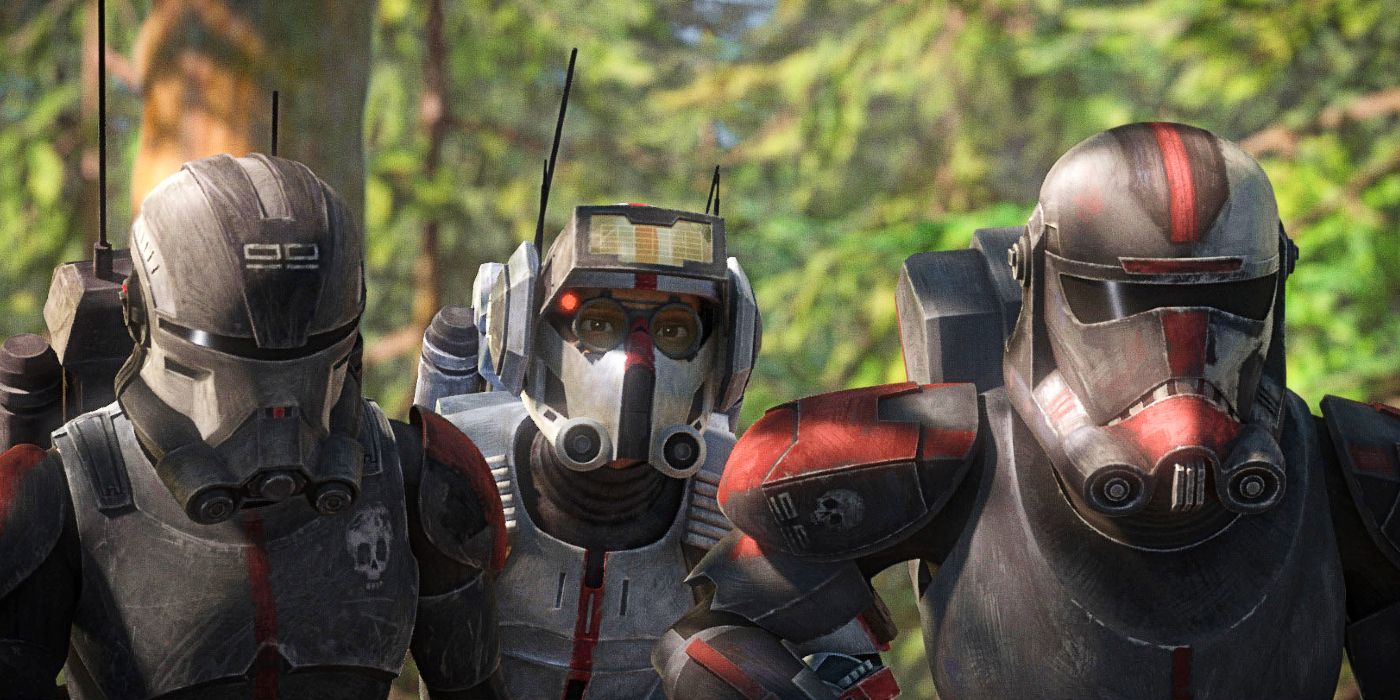Warning: Contains SPOILERS for Star Wars: The Bad Batch episode 16.
The Star Wars: The Bad Batch season 1 finale brought the story of Kamino to a dramatic close, and asked disturbing questions about whether the clones have free will at all - even after the removal of the inhibitor chips. The Bad Batch was divided by the rise of the galaxy's new regime; while most of the squad chose to become freelancers, Crosshair dedicated himself to the Empire. In Star Wars: The Bad Batch episode 15, he drew his old squad-mates back to Kamino and offered them a chance to rejoin the Empire. Needless to say, it didn't go as Crosshair planned, and the penultimate episode of season 1 ended with the Empire bombarding the planet in an attempt to destroy the clones.
Star Wars: The Bad Batch season 1's finale saw Clone Force 99 struggle to make it back to their ship in order to escape Kamino. They were initially stranded at the bottom of the sea-bed because the city block they were in had been submerged, but a number of smart decisions allowed them to get to the surface. The survival mission presented an interesting opportunity to shine a light on Crosshair's character in particular, exploring his dedication to the Empire, and the questions the clones raised have profound implications for the future of the entire Star Wars galaxy.
Star Wars typically presents the battle against the Empire as a cosmic clash between light and dark, between Jedi and Sith, but Star Wars: The Bad Batch takes a different approach. Here's what the season 1 finale means for the Star Wars saga as a whole.
The Bad Batch Ends Star Wars' Clone Era
The story of the clones began in Star Wars: Episode II - Attack of the Clones, when Kamino was "found" by Obi-Wan Kenobi; all records of Kamino's existence had been deleted from the Jedi Archives by Jedi Master Sifo-Dyas, and the planet's existence was only discovered when the Jedi detected the gravitational pull of a star that was not showing in their database. It is fitting, then, that the story of Kamino ends in an episode entitled "Kamino Lost." The Kaminoan city is destroyed by the Empire, and while Admiral Rampart's bombardment does not begin until he believes Crosshair has lost control of the situation, it is likely he always intended to initiate planetary bombardment.
The Kaminoan city existed only as long as it was of use to the Empire, and it is destroyed by the Empire rather than allow its facilities to be used by anyone else. This, more than probably anything else in Star Wars: The Bad Batch season 1, demonstrates the true brutal nature of the Empire. It foreshadows the countless atrocities the Empire will commit, culminating in the construction of not one but two Death Stars. But note that, at this point in time, while the atrocities have begun just a few months of Star Wars: Episode III - Revenge of the Sith, they are still being conducted in the shadows, on worlds most people don't even know exist, to people far from the Core Worlds of Coruscant, Corellia and Alderaan.
The Bad Batch Sets Up The Mandalorian's Cloning Mystery
The Empire only appear to be interested in one Kaminoan; Nala Se, the Chief Medical Scientist who ran the clone program. She is forcibly escorted to an Imperial facility, where she will work with the Empire in ensuring the knowledge of cloning is not lost to the Empire. This deliberately sets up The Mandalorian, which revealed Imperial Clone Technicians such as Dr. Pershing still used Kaminoan logos; Pershing wore the same uniform as the scientists in the facility Nala Se is sent to. Everything is connected in Star Wars, and a subtle mystery from The Mandalorian has been partly explained.
Nala Se's work will eventually lead to the attempts to clone Grogu in The Mandalorian, the Strandcast that is Supreme Leader Snoke in the sequel trilogy, and the cloning of Palpatine himself, with the Emperor surviving his death in Return of the Jedi by moving his spirit into a clone body created on the Sith redoubt of Exegol. Her fate in Star Wars: The Bad Batch episode 1 is, therefore, essential setup for Star Wars: The Rise of Skywalker, when the Emperor returned to threaten the galaxy once again, as she provides the key link for how the Empire cracked the secrets of cloning in order for his comeback.
Clones Still Don't Have Free Will (Despite Removing The Inhibitor Chips)
The question of "nature versus nurture" was always important to the clones, with Star Wars: The Clone Wars asking time and again whether they truly possessed free will. The inhibitor chips that commanded clones to participate in Order 66 were the logical culmination of this, stripping them of all sense of agency, but Star Wars: The Bad Batch season 1's finale implies the clones still don't have free will even when the chips are removed. Crosshair is not said to have chosen the Empire because of his own free will, but because it is his nature; the implication is that each individual clone was created with a certain personality matrix, and they must obey it.
Even more disturbingly, the episode subtly compares this with the programming of AZI. The little droid is willing to sacrifice itself for Omega, but not because of their friendship; his self-sacrificial nature is a result of his programmed mission objectives. According to the Star Wars: The Bad Batch season 1 finale, clones and droids operate on the same level, bound to their basic programming. It's a chilling response to the "nature versus nurture" debate.
The Bad Batch Foreshadows The Galactic Civil War
"We want different things, Crosshair," Hunter tells his old teammate as they part ways, "but it doesn't mean we have to be enemies." Crosshair is wrong, of course; already the Bad Batch is loosely aligned with the Rebellion, with Hunter making several choices that undermined the Empire throughout season 1, while Crosshair remains devoted to the Imperial philosophy. The division foreshadows the coming Galactic Civil War, and Crosshair's reluctance to commit to open conflict fits well with the fact it is still some years away at this point.
Star Wars traditionally portrays the Empire and the Rebellion in terms of the light and dark sides of the Force, but here it is reduced from a cosmic scope to the desires of individuals playing against one another. Star Wars: The Bad Batch showrunner Dave Filoni is fond of this approach, discussing the balance of the Force on an individual level in an interview back in December 2020. "The dark side of the Force is manifested in our greed, desire for power, and fears. And the light side of the Force is propagated by selfless action, by living in balance, by overcoming our fears," he explained. "The Force naturally exists in balance; that balance is thrown out when someone chooses to give in to their fears and then spirals out of control making selfish choice after selfish choice. Fear leads to anger, anger leads to hate, hate leads to suffering." Crosshair's decisions - whether made out of free will or not - align himself with the dark side, while Hunter tilts towards the light.
Why Crosshair Is Still On The Empire's Side
Ultimately, though, Crosshair chooses the side of the Empire - even after they have literally attempted to kill him for a failure. He genuinely believes in the fascistic mission of the Empire, and that galactic order is worth any price. But it will certainly be fascinating to see whether the destruction of Kamino has shaken his sense of self-worth, for he previously believed mutated clones would be one of the Empire's greatest assets, and he is now aware they were willing to discard him without a second thought. There is a hint his story is not yet done, though, because Crosshair saves Omega when he doesn't need to, and he is troubled by Hunter's reminder he will only ever be a number to the Empire - not an individual in his own right.
What The Bad Batch Season 2's Story Will Be About
Star Wars: The Bad Batch season 1 has been loosely driven by the story of Kamino, but now that is at an end. It's possible season 2 will continue to explore Nala Se's fate, with the Imperial Clone Technicians creating clones of their own, but that may not be necessary; she's been positioned where she'd need to be to explain The Mandalorian's connection to the Kaminoans, so her story too could well be over. Meanwhile, with the Kaminoans wiped out, Omega - the future of their cloning program - is no longer so important, meaning bounty hunters won't be scouring the galaxy looking for her.
All that means Star Wars: The Bad Batch season 2 is something of a blank canvas, with no obvious overarching theme to it beyond the ongoing story of the rise of the Rebellion, as well as Clone Force 99's place in the galaxy, and Crosshair's still possible redemption, or at least his role within the Empire. As such, it wouldn't be a surprise to see Lucasfilm jump forward in the timeline; they were already attempting to accelerate the formation of a recognizable Empire, so a time jump would probably be helpful in narrative terms.
Star Wars: The Bad Batch will return for season 2 on Disney+.

